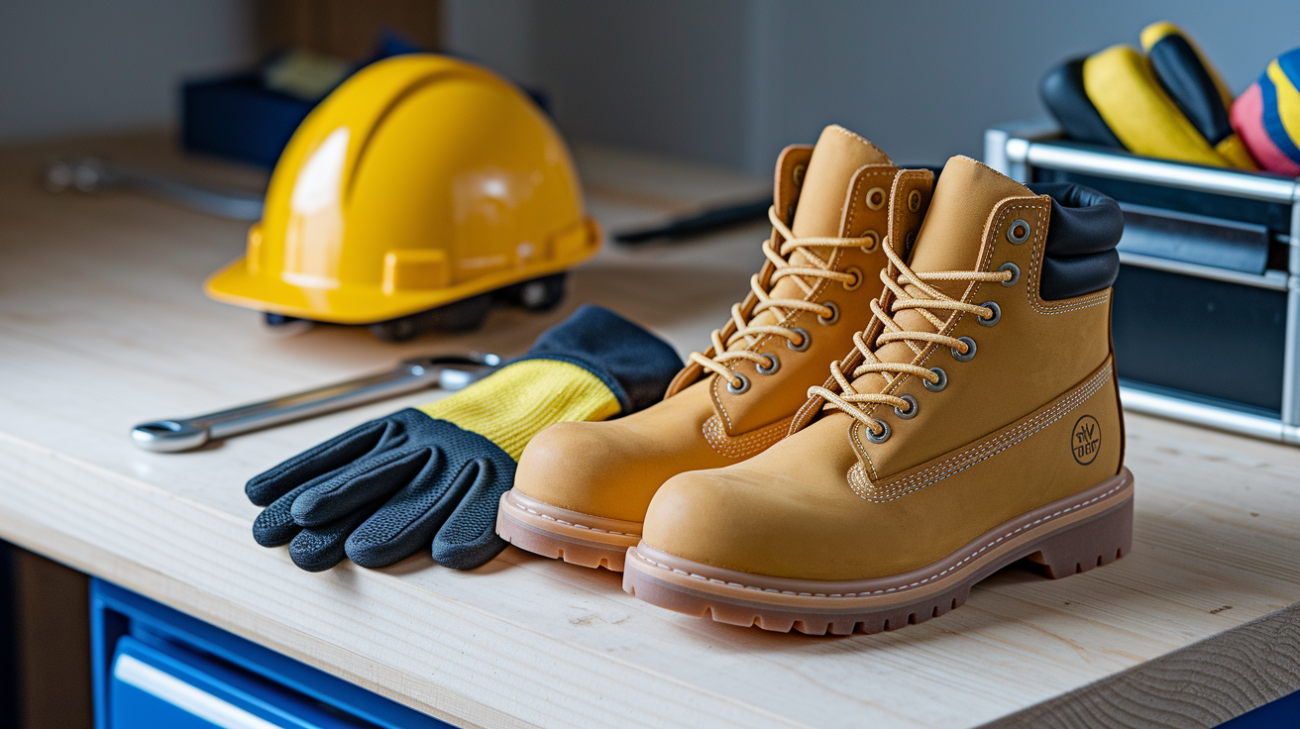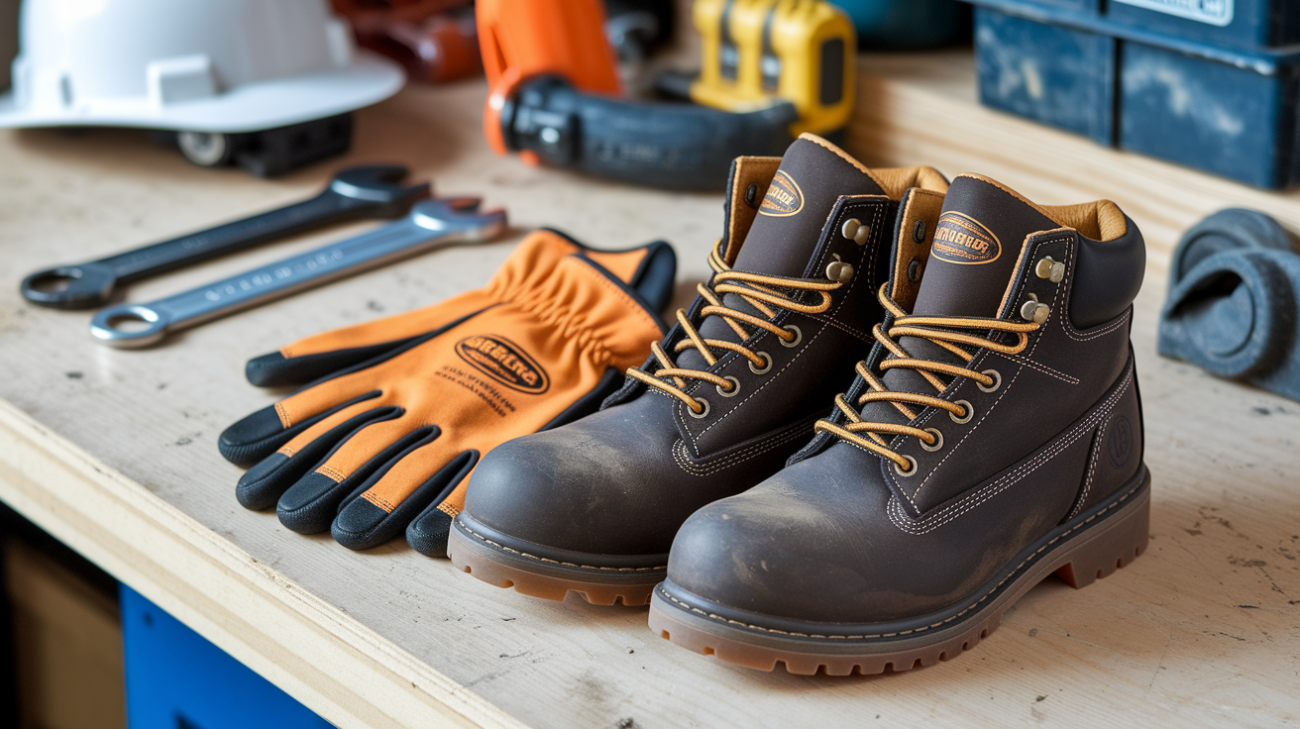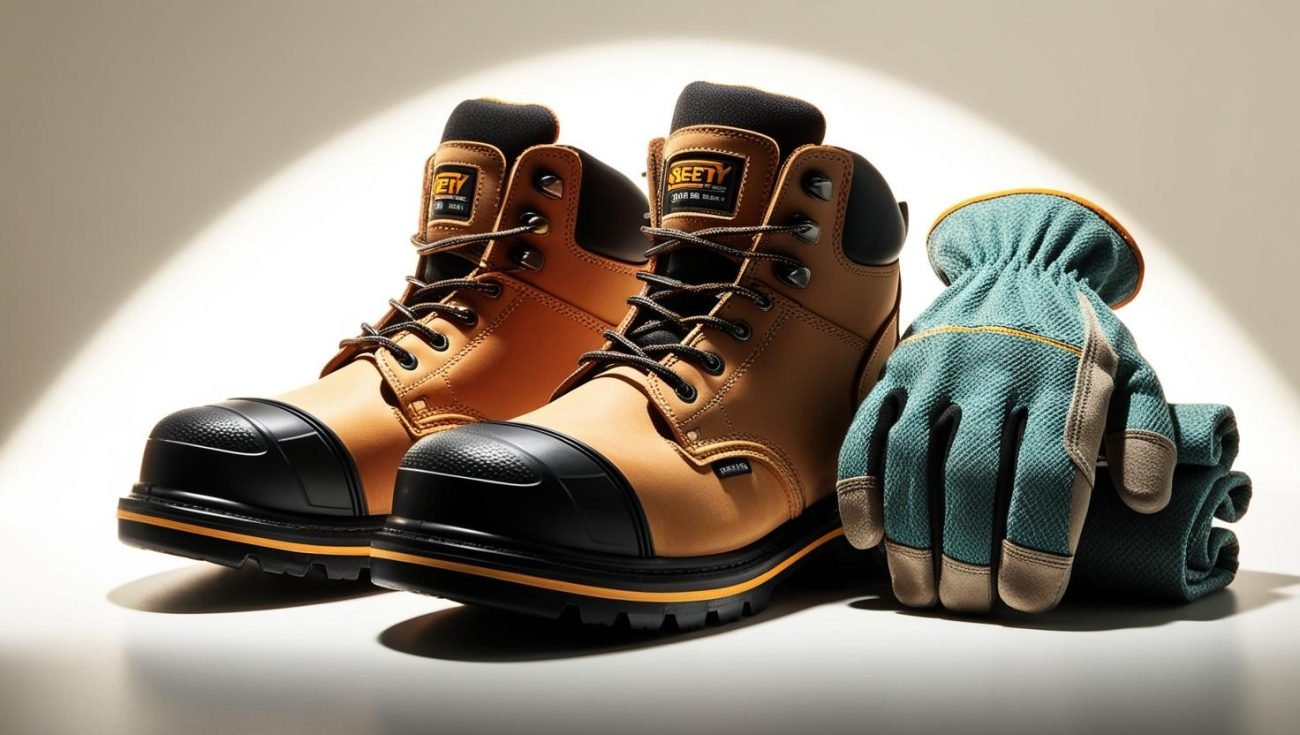Workwear Clothing Must-Haves: Safety Footwear and Gloves for Every Job | Mar 2025
 When it comes to workplace safety, investing in the right gear is not just smart—it’s essential. Whether you’re working on a busy construction site, in a manufacturing plant, or even in an environment where everyday hazards exist, proper safety footwear and gloves are staples of any effective workwear setup. These two categories of protective clothing not only enhance comfort and productivity but, more importantly, keep you safe from injuries that can have long-term consequences.
When it comes to workplace safety, investing in the right gear is not just smart—it’s essential. Whether you’re working on a busy construction site, in a manufacturing plant, or even in an environment where everyday hazards exist, proper safety footwear and gloves are staples of any effective workwear setup. These two categories of protective clothing not only enhance comfort and productivity but, more importantly, keep you safe from injuries that can have long-term consequences.
Why Safety Footwear and Gloves Are Essential
Workplace injuries are a significant concern across industries. According to global statistics, thousands of injuries occur yearly due to inadequate safety measures, many of which could have been prevented by wearing proper safety footwear and gloves. These two items serve as fundamental barriers between workers and hazards, and they are legally required in many industries.
What Do Safety Footwear and Gloves Protect Against?
Safety Footwear:
Crushing Injuries: Heavy objects falling or rolling onto feet can cause severe injuries.
Sharp Objects: Punctures or cuts from nails, tools, or machinery are common risks.
Slips and Falls: Oil, water, or other slippery substances increase the likelihood of slips, resulting in minor to severe injuries.
Electrical Hazards: Some shoes are designed to prevent shock in environments with live electrical risks.
Extreme Temperatures: Protective boots shield feet from excessively hot or cold environments.
Safety Gloves:
Cuts and Abrasions: Handling sharp tools or materials frequently exposes hands to lacerations.
Chemical Burns and Irritants: Gloves designed for chemical handling protect against exposure.
Heat and Cold: Insulated gloves protect hands in extreme weather or when handling hot or cold surfaces.
-
- Grip: Enhanced gloves prevent objects from slipping, reducing the risk of workplace accidents.
Safety footwear and gloves are the first line of defense in hazardous environments, reducing injury risks that could lead to costly downtime, medical bills, or even permanent damage.
Types of Safety Footwear for Every Job

Choosing the right safety footwear can be overwhelming because of the numerous types available. Understanding your job-related risks will help you choose shoes or boots that provide the best protection and comfort.
Steel Toe Boots
Steel toe footwear is the go-to choice for industries such as construction, manufacturing, and heavy equipment operations. Reinforced with a steel cap, these boots prevent crushing injuries from falling objects while providing overall durability.
Composite Toe Boots
Composite toe boots use non-metal materials like fiberglass or plastic to offer lightweight and non-conductive protection. They are ideal for workers in electrical or extreme-temperature environments where metals may pose risks.
Slip-Resistant Footwear
For hospitality, healthcare, and industrial workplaces, slip-resistant soles are critical for preventing accidents caused by spills, grease, or uneven surfaces.
Electrical Hazard Boots
Designed with non-conductive materials, these boots are a must-have for electricians or anyone working around live circuits or high-voltage equipment.
Waterproof and Insulated Boots
For outdoor workers dealing with rain or snow, such as construction or utility workers, having waterproof boots with insulation ensures dry, warm feet and reduces hypothermia risks.
Athletic Safety Shoes
For light industrial work or jobs that require movement and agility, athletic-style safety shoes combine protective features like toe caps with the flexibility and lightweight structure of sportswear.
Types of Safety Gloves for Every Job
Much like footwear, the best gloves depend on the specific tasks you perform. They range from basic hand protection to highly specialized gloves designed for unique industrial processes.
Cut-Resistant Gloves
Made from materials such as Kevlar or other synthetics, cut-resistant gloves protect against sharp tools, blades, and abrasive materials. They are commonly used in construction, warehousing, and manufacturing.
Chemical-Resistant Gloves
For industries like chemical manufacturing, cleaning, or lab work, gloves made from materials like nitrile, neoprene, or PVC are critical for barrier protection against toxic or corrosive substances.
Thermal-Resistant Gloves
Designed for handling hot materials or working in freezing conditions, these gloves feature insulation and specialized coatings to withstand extreme temperatures.
Impact-Resistant Gloves
Popular in construction, oil rigging, and mechanical jobs, impact-resistant gloves have built-in padding or hard protection over knuckles and fingers to absorb shocks and prevent hand injuries.
Grip Gloves
For jobs requiring firm control of objects in slippery or wet conditions, like plumbing or assembly work, grip-enabled gloves enhance safety and performance.
How to Choose Safety Footwear and Gloves
Features to Consider When Choosing Safety Footwear
Fit and Comfort: Shoes or boots that don’t fit properly can cause blisters or fatigue, reducing productivity.
Durability: High-quality safety footwear should withstand the demands of your job, whether it’s heavy impacts, exposure to chemicals, or harsh weather.
Compliance Standards: Ensure the footwear meets your industry’s safety certifications (e.g., EN ISO 20345 or ASTM standards).
Breathability: Shoes designed for comfort in warm conditions prevent sweating and bacterial growth.
Weight: Lightweight materials can improve movement and reduce fatigue.
Features to Consider When Choosing Gloves
Material: Choose the one appropriate for risks encountered at work (Kevlar for cuts, nitrile for chemicals, etc.).
Dexterity: Opt for gloves that provide flexibility and range of motion, ensuring you can perform tasks efficiently.
Grip: Gloves with textured fingers or palms improve control when handling wet or slick objects.
Compliance Standards: Look for gloves certified for your industry by organizations such as ANSI, EN, or ISO.
Moisture Control: For work in moist environments, ensure gloves repel water while maintaining breathability.
Popular Brands for Safety Footwear and Gloves in 2025
The workwear industry has seen impressive innovations from leading manufacturers. In March 2025, here are some of the most recommended brands:
Safety Footwear:
- Timberland PRO: Known for durable boots with exceptional comfort and waterproofing.
- Caterpillar: Heavy-duty footwear designed for construction and manual labor.
- Red Wing Shoes: Offers premium materials and custom-fit comfort.
- KEEN Utility: Lightweight, athletic-inspired protective footwear.
- Dr. Martens Industrial: Stylish yet functional boots with steel toes.
Safety Gloves:
- Ansell: Known for its diverse range of gloves for chemical, mechanical, and thermal applications.
- Mechanix Wear: Offers highly durable gloves, popular in automotive and construction industries.
- HexArmor: Leading in cut and puncture-resistant gloves with advanced grip technology.
- SHOWA: Specializes in chemical-proof and ergonomic gloves.
- Ironclad: Combines tough protection with touchscreen compatibility and comfort.
The Future of Safety Footwear and Gloves
Technological advancements are revolutionizing workwear in 2025. Smart safety footwear and gloves are gaining popularity, offering features like:
- Sensors: Gloves and boots equipped with sensors that monitor environmental hazards or detect fatigue in the wearer.
- Anti-Microbial Treatments: Ensures odor-free and sanitary workwear in prolonged usage.
- Sustainable Materials: Manufacturers are prioritizing eco-friendly materials without compromising performance.
Artificial intelligence also plays a role in helping workers choose the right type of gear tailored to their tasks and analyzing wear-and-tear to predict replacement needs.
Conclusion
Safety footwear and gloves are indispensable for protecting workers across all industries. With advancements in comfort, durability, and sustainability in 2025, it’s easier than ever to find workwear that meets your needs while keeping you comfortable. Investing in high-quality safety gear is investing in yourself—because safety should always be your first priority.
Whether you’re a seasoned professional or starting a new job requiring PPE, take the time to research and choose footwear and gloves that are tailored to your specific risks and workspace. After all, prevention is always better than cure when it comes to workplace safety.
Frequently Asked Questions (FAQs)
How do I know if my safety footwear or gloves comply with workplace standards?
Most safety footwear and gloves come with certifications or labels indicating they meet recognized standards. For example, footwear can be marked with EN ISO 20345 (European standard) or ASTM F2413 (USA). Gloves might comply with EN388 (Mechanical Protection) or EN374 (Chemical Protection). Always check for certifications relevant to your industry’s safety protocols.
Can safety gloves and footwear be both protective and comfortable?
Yes, modern protective equipment has evolved to maximize comfort and usability. Technologies such as lightweight materials, ergonomic designs, and moisture-wicking liners ensure you don’t have to sacrifice comfort for protection.
How often should I replace my safety footwear or gloves?
This depends on usage and exposure to hazards, but as a general rule:
- Safety footwear should be replaced every 6-12 months or sooner if noticeable damage occurs.
- Gloves may need to be replaced more frequently, depending on the job type. For instance, chemical-resistant gloves must be replaced if any corrosion or puncture is visible.
What’s the difference between steel-toe and composite-toe boots?
Steel-toe boots use a steel-capped reinforcement to protect against crushing injuries, making them heavier and ideal for heavy-duty work. Composite-toe boots use lighter, non-metal materials that are better suited for electrical or extreme-temperature environments.
Are there sustainable options for safety footwear and gloves?
Yes, many manufacturers are developing eco-friendly versions of protective gear. Sustainable safety footwear is often made from recycled materials, and gloves use plant-based or biodegradable components without compromising safety or functionality.


